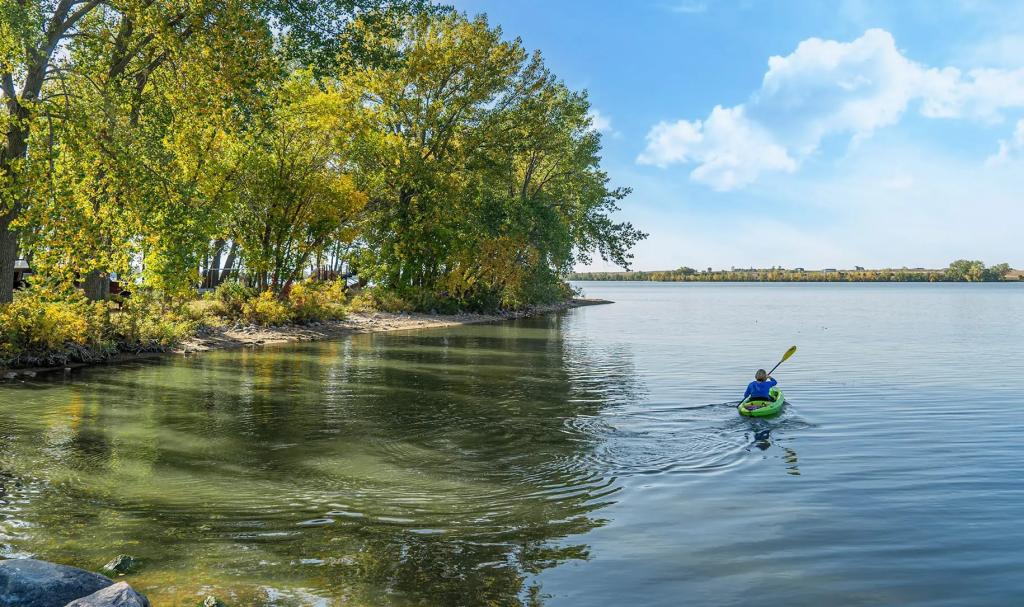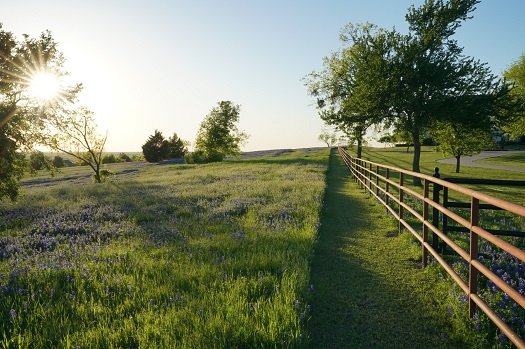Estimated reading time: 4 minutes

Rural living at the lake comes with multiple pros and cons, such as:
- Pros
- Privacy
- Cost of Living
- Cleaner Air
- Cons
- Distance
- Wildlife
- Amenities
Choosing where to live can be a stressful decision. One type of terrain to consider is rural living. A rural area is an open swath of land with few homes or other buildings and not many other people. A rural area has a very low population density. Every terrain has pros and cons, so here are three of each for rural living.
Pros

Debatably, privacy is one of the top pros when it comes to rural living. Due to rural areas having a low population, there is a lot of privacy. Most houses and lots are spread apart, even with many having multiple acres of land. Within this, there are layers of positives that come with privacy. You don’t have to worry about unexpected guests or traveling salespeople. You have more options for a larger home because there is more room. Plus, you’ll have privacy in the sense of personal autonomy since there will be fewer societal pressures.
Another more immediately noticed pro is the lower cost of living. Best Places compared Livingston, Montana, versus New York City when it comes to the cost of living. The overall index of New York was 64% higher than Livingston. Urban living ranks higher across the board in all categories, including food, housing, utilities, health, and more. Rural living has less competition for necessities, resulting in a lower financial strain on a family.
Additionally, rural living will benefit you medically with less air pollution. The Centers for Disease Control tested air quality and found that rural areas have less air population. This comes from fewer vehicles, less construction, and more nature. This is important because poor air quality can reduce the quality of life, especially for those susceptible to allergens.
Cons

When it comes to the negatives of rural living, the most obvious one is distance. Those living in rural areas are significantly farther away from multiple amenities. Those with serious health issues should be aware of the distance from emergency rooms, which can often be an hour away. Additionally, there will be less entertainment. You’ll have to travel to the nearest large city for shopping centers, movie theaters, sporting events, etc. Even when it comes to more common goods, like groceries, stores can be 20 miles away or more.
Another con of rural living is the wildlife, including bugs. Depending on the region of your rural home, these critters can vary. Either way, the wildlife is far more prominent than in an urban area. Bugs can include mosquitoes and ticks, while animals can range from snakes to bears. Not only will you have to get used to these new animals and insects near you, but you will also have to learn how to prepare for them. You need to leave pet food inside, along with your domestic pets, and mow frequently.
One other negative is the lack of amenities such as internet access. Internet speed in rural areas is traditionally slow. As society evolves, the internet and technology become more and more pertinent. Those in rural areas may lack the infrastructure to access high-speed internet. This can create a digital divide—a gap between those who have access to modern information and communications technology. In turn, this can make those living in rural areas feel disconnected and behind the times.
Overall, one thing that doubles as both a pro and a con when it comes to rural living is the regional culture. Rural living creates a unique culture, which may or may not appeal to every individual. In essence, rural living can seem very connected. It focuses on family, friends, and fellowship. If you are looking for a fast-paced environment, the rural culture could be a negative for you. It’s all dependent on who you are and what you’re looking for in a community. No matter where you stand, we suggest taking a trip to the countryside to see what rural living is all about.
What are the downsides of living in a rural area?
While rural living has its perks, it also comes with some drawbacks. One significant downside is the distance from amenities and emergency services. People living in rural areas may need to travel long distances to access shopping centers, healthcare facilities, and other entertainment options. Moreover, rural areas are often home to various wildlife, including bugs and animals, which can require residents to adapt to coexisting with them. Slow internet and limited access to high-speed technology are other challenges that can create a digital divide for rural residents.
How does rural living impact culture?
Rural living has a unique culture that can be viewed as both a pro and a con, depending on individual preferences. Rural communities tend to foster strong connections with family, friends, and neighbors, emphasizing fellowship and a sense of community. Rural culture can be a significant positive for those seeking a close-knit and connected environment. However, if someone prefers a fast-paced lifestyle with more diverse opportunities, the rural culture might be seen as a downside. Ultimately, the perception of rural culture varies from person to person and depends on their personal preferences and values.
Is healthcare easily accessible in rural areas?
Healthcare accessibility can be a concern in rural living. Due to the distance from urban centers, rural residents may find themselves farther away from emergency rooms and specialized medical facilities. In case of serious health issues, reaching appropriate healthcare facilities might take longer, with emergency services often being an hour or more away. This is an important consideration for individuals with pre-existing health conditions or those who require regular medical attention.
How does wildlife impact rural living?
Wildlife in rural areas can be both fascinating and challenging. Rural residents experience a more prominent presence of bugs, such as mosquitos and ticks, as well as animals like snakes and bears, depending on the region. While this can create opportunities for nature enthusiasts, it also demands certain precautions. Residents must learn to coexist with wildlife, which may involve taking measures like keeping pets indoors, securing food sources, and regular property maintenance. Adapting to the wildlife is essential to ensure a safe and comfortable rural living experience.

